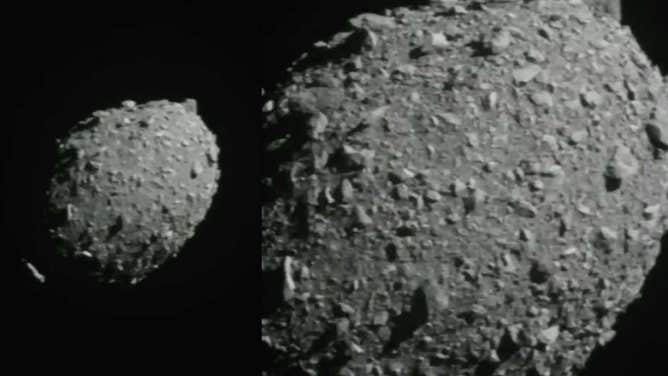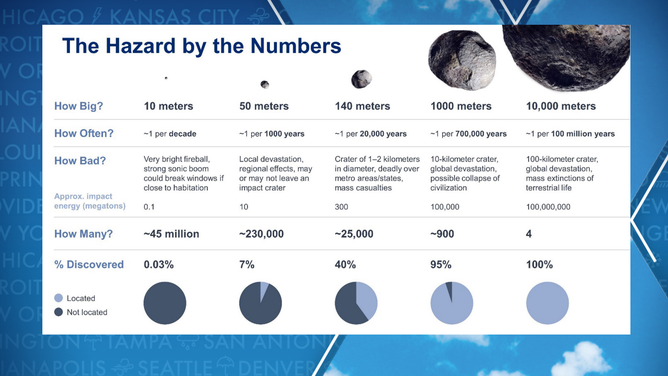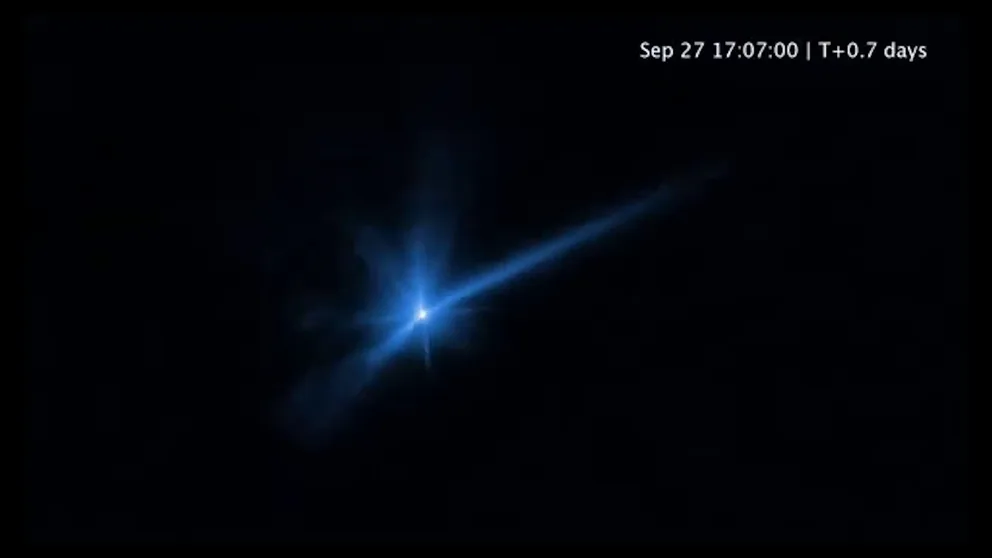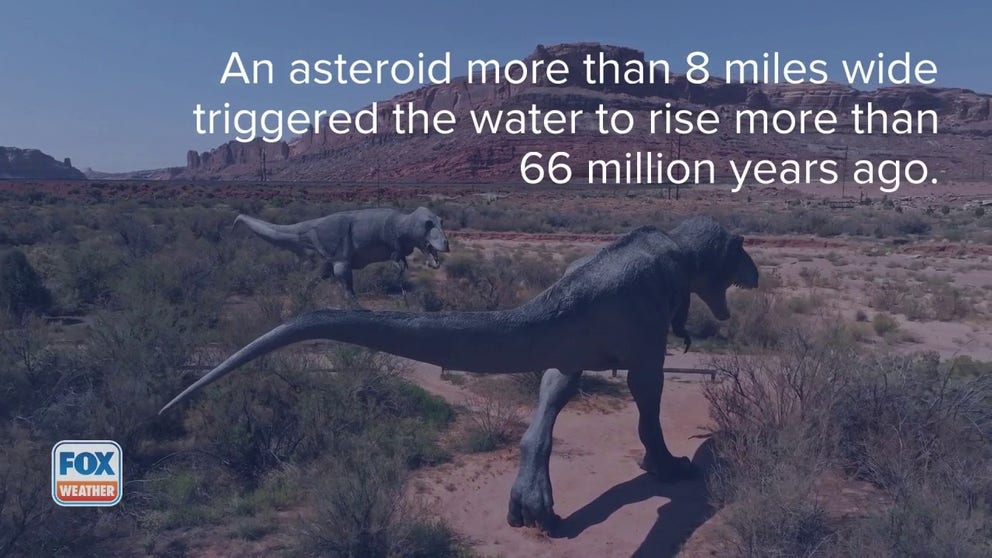How NASA is working to protect Earth from an asteroid strike
The space agency plans to improve near-Earth object detection, develop mitigation technologies similar to the DART mission and streamline preparedness and response plans..
Watch: New video shows DART asteroid impact debris from Hubble space telescope
A video NASA released on Wednesday shows the debris caused by the Double Asteroid Redirection Test (DART) mission spacecraft slamming into the asteroid Dimorphos. (Courtesy: NASA / ESA / STScI / Jian-Yang Li (PSI) / Joseph DePasquale (STScI))
WASHINGTON – The world’s premiere space agency has unveiled a plan that it says will keep humans on track for developing technology and other preparations to safeguard against any life-alternating asteroid impact.
Observing and studying near-Earth objects has happened for decades but mitigating impacts from these giant clumps of space material, and rocks is a relatively newer endeavor.
A significant cornerstone of the plan takes into account results from NASA’s 2022 DART mission, which intentionally crashed a spacecraft into the surface of an asteroid known as Dimorphos 285. The force of the impact changed the orbit of the asteroid and was the first time humans had changed a celestial object’s motion.
"As we saw with the success of the DART mission, NASA is committed to protecting Earth from potentially hazardous asteroids and comets," NASA Administrator Bill Nelson said in a statement. "Planetary defense benefits all of humanity, and NASA’s strategy and action plan outlines how we will continue to protect our home planet over the next decade."
‘LOSS OF SIGNAL:’ NASA SUCCESSFULLY CRASHES DART SPACECRAFT INTO ASTEROID FOR PLANETARY DEFENSE TEST

Asteroid Dimorphos as seen by NASA's DART spacecraft seconds before impact.
(NASA / JHUAPL / NASA)
Objectives over the next decade include improving near-Earth object detections, developing mitigation technologies similar to the DART mission and streamlining preparedness and response plans.
NASA plans to launch a Near-Earth Object Surveyor space telescope in 2028 to further enhance the agency’s detection of asteroids and comets that come within 30 million miles of Earth.
Through infrared technology, the NEO Surveyor is expected to be capable of determining the composition, shape, orbit and size of objects in space.
Once in operation, the telescope could help triple scientists’ capabilities and detect 90 percent of space debris around 460 feet or larger.
NASA DISCOVERS ASTEROID THAT HAS SLIGHT CHANCE OF HITTING EARTH ON VALENTINE’S DAY 2046

Asteroid hazard chart
(NASA)
Tens of millions of near-Earth objects exist, but only those 32 feet or larger are considered hazardous.
Formations about half a mile or larger are the significant events believed to be world-changing.
Around 95 percent of these large asteroids are thought to have been identified, with none appearing to be on a collision course with Earth.
For comparison, the asteroid that is believed to have triggered the dinosaurs' extinction was around 6–10 miles wide, according to The Natural History Museum in London.
"An asteroid impact with Earth has potential for catastrophic devastation, and it is also the only natural disaster humanity now has sufficient technology to completely prevent," Lindley Johnson, a NASA planetary defense officer, stated. "The release of this NASA strategy steps up NASA’s intentions for the next 10 years to ensure the agency works both nationally and internationally to protect our planet for the benefit of all."
Fortunately, the space agency does not expect to implement response plans in the immediate future. Earth is not facing a significant threat from any asteroid during the next 100 years.
Dinosaur-killing asteroid triggered a tsunami with mile-high waves
An asteroid that struck Earth 66 million years triggered a megatsunami that wiped many of the dinosaurs

